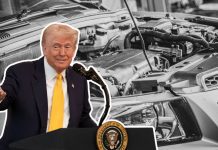2015 and 2016 were record-setting years for the auto industry. Sales were at an all-time high, and it seemed as if the trend could continue into 2017. Unfortunately, the trend did not continue as 2017 saw 17.23 million vehicles sold, down from 17.55 million units in 2016. While it is a decline, the numbers do not look as if they are a cause for alarm, but analysts are concerned if trends that led to last year’s fall could continue into 2018.
Last year, most brands experienced an overall decrease in sales compared to the previous year. Compared to January 2017, the first month of this year saw a slight decline. However, General Motors, Toyota, and Nissan’s high sales numbers helped the month round out as the fourth best in the last seven years. Cox Automotive does not expect this uptick to continue into February. They project a four percent decline compared to the previous year with only 1.275 million units sold. What are the potential reasons for this decline that dealers and industry analyst are expected to be on the lookout for in February and the rest of 2018?
Higher interest rates – 2018 is predicted to bring higher interest rates for potential car buyers. Consumers with lower credit scores will experience increased payments, causing them to take out more extended loans. Last year’s automotive incentives were some of the highest on record at $3,400. Automakers are expected to reduce these perks for buyers. As a result, consumers will experience higher lease payments. This change will be a factor F&I departments will have to navigate as they walk consumers through this new and more expensive landscape.
The rise of used vehicles – There is no mistake about it, 2018 is shaping up to be the year of the “gently-used” vehicle. As incentives for new cars decrease and consumers experience higher price-tags for 2019 cars, car buyers will be on the lookout for more affordable used vehicles. Eric Lyman, the chief industry analyst at ALG, expects demand to be highest among cars that are one to five years old. The influx of more of these vehicles hitting the market will create viable competition for new cars.
An erratic stock market – Wall Street has been volatile for most of February. At one point, The Dow Jones Industrial Average declined 6.5 percent. Since the second week of the month, Wall Street has been up and down, and this instability could scare buyers from making a car purchase. The Great Recession is still fresh in the minds of most people, and any reminders of this time will impact the confidence of buyers. If this volatility continues, it could contribute to continued declines.
SUVs and Crossovers Reign Supreme – If 2018 has the potential to be the “year of the gently-used vehicle,” then 2017 was all about the SUV and Crossover. Early numbers for this year reveal that the preference for larger vehicles could continue. Compact and Mid-Sized SUVs ruled February at 240,000 and 190,000 units respectively. These numbers are even higher when compared to 2017. While this is good news for automakers who specialize in larger cars, this still means that a significant segment of smaller vehicles is at risk for staying on dealership lots.
Auto industry experts are preparing for a decline compared to 2017 in overall auto sales. February is historically a low-selling month for auto sales as a result of harsh weather conditions around the country and a shorter calendar. However, these sluggish sales could be an indication of more decline to come. Experts hope the numbers will level out for a year that is on par with 2017.








